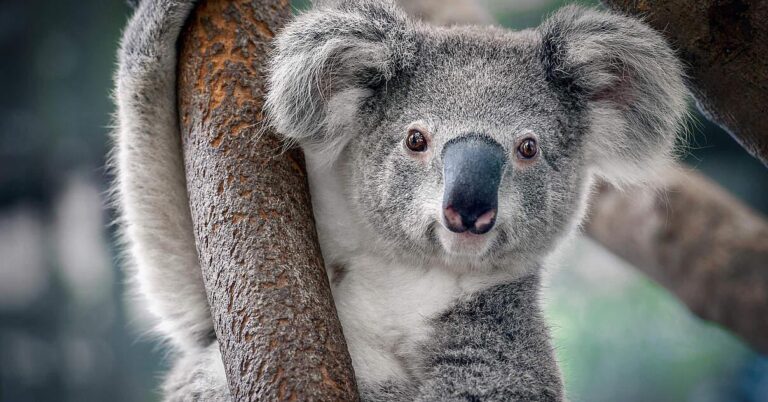Australia under Fire: Controversial Koala Culling Practices spark Outrage
In a startling advancement that has drawn widespread condemnation both within Australia and beyond, the nation is facing intense backlash over its contentious culling operations aimed at controlling koala populations. Critically referred to as “sniper shooting” by opponents, this method has been denounced by animal rights advocates, conservationists, and concerned citizens alike. They argue that such actions represent a severe breach of ethical wildlife management principles. The targeted killing of hundreds of koalas has ignited a heated discussion regarding Australia’s wildlife preservation policies and the moral ramifications of employing such extreme measures. As the country confronts pressing environmental issues and declining animal populations, the public outcry against these practices underscores broader anxieties about how its iconic wildlife is treated and highlights an urgent need for enduring conservation approaches.
Growing Concerns Over Koala Population control Methods
As environmental concerns escalate, Australia finds itself under significant scrutiny for its controversial strategies in managing koala numbers—methods some critics have labeled as “sniper shooting.” This approach raises critical ethical questions about balancing human intervention with wildlife conservation efforts in Australia. Many activists contend that these drastic measures not only threaten an already vulnerable species but also undermine broader initiatives aimed at preserving australia’s unique biodiversity. The backlash continues to grow as wildlife advocates express their discontent through various channels, characterizing this situation as a regrettable chapter in the nation’s conservation narrative.
Key Points of discussion:
- Public Sentiment: A considerable segment of Australians opposes culling methods.
- Proposed Alternatives: Suggestions include relocating koalas, protecting their habitats, and rehabilitation efforts.
- Biodiversity Impact: Koalas are integral to their ecosystems; they contribute significantly to forest health.
Urgent Calls for Reform in Wildlife Protection Legislation
Recent reports have unveiled alarming incidents where over thirty koalas were reportedly subjected to sniper shooting under questionable wildlife management practices. This disturbing trend has sparked public outrage while highlighting deficiencies within current wildlife protection laws.Conservation experts are raising alarms about the necessity for immediate reforms to safeguard endangered species like the beloved koala. Many assert that existing legislation permits actions detrimental not only to animal populations but also tarnishes Australia’s image as a guardian of biodiversity.
In light of these developments, conservationists advocate for thorough reviews of current wildlife management policies with an emphasis on enhancing protections for at-risk species. Proposed reforms include:
- Stricter Guidelines: Establishing more rigorous standards governing culling practices.
- Habitat Conservation: Strengthening measures designed to protect vital habitats crucial for sustaining koala populations.
- funding Increases: Allocating more resources toward rehabilitation programs focused on injured or displaced animals.
- Educational Initiatives: Launching campaigns aimed at raising awareness about endangered species among the public.
These proposed changes could serve as foundational steps toward developing more humane and effective strategies in managing Australian wildlife while aligning with global biodiversity protection efforts.
Public Demand Fuels Need for Enhanced Oversight in Wildlife Management
The recent exposure of large-scale culling operations targeting Australian koalas has triggered significant public outrage leading to urgent demands for improved oversight within wildlife management frameworks. Activists alongside animal rights organizations are calling upon goverment officials to implement stricter regulations ensuring humane treatment and sustainable management practices concerning native fauna. The culling operation has been described by many as an “embarrassment,” reflecting a growing societal consensus prioritizing native species’ protection over outdated methodologies inconsistent with modern ethical standards.
In response to this mounting pressure from communities across Australia,there is advocacy pushing for thorough evaluations of existing protocols governing wildlife management—emphasizing accountability mechanisms essential in fostering trust between authorities and citizens regarding ecological stewardship initiatives:
Suggested Reforms Include:
- Regular Audits: Conducting systematic reviews on all aspects related to wildlife management operations.
- Mandatory Public Consultations: Ensuring community input before any decisions regarding culling initiatives are made.
- Enhanced Funding: Increasing financial support directed towards rehabilitation programs dedicated specifically towards vulnerable species recovery efforts.
Conclusion
The troubling reports surrounding Australia’s controversial approach towards managing its iconic koala population through what some describe as ‘sniper shooting’ have incited widespread indignation both domestically and internationally. Advocates championing animal welfare demand immediate action alongside accountability measures emphasizing humane treatment methods amidst ongoing threats posed by habitat destruction and climate change challenges faced by these marsupials today . As discussions continue around this pivotal issue ,Australia stands at a crossroads where it must reconcile ecological sustainability goals with necessary population control tactics . The nation’s reputation concerning its commitment towards conserving unique flora & fauna now faces scrutiny ,and repercussions stemming from this incident may catalyze essential policy shifts along with altering public perceptions moving forward . With collective voices rising against such harsh measures ,it becomes evident that unified action is imperative if we hope preserve & protect Australia’s unusual natural heritage while restoring faith into our systems governing responsible wildlifemanagement strategies .




